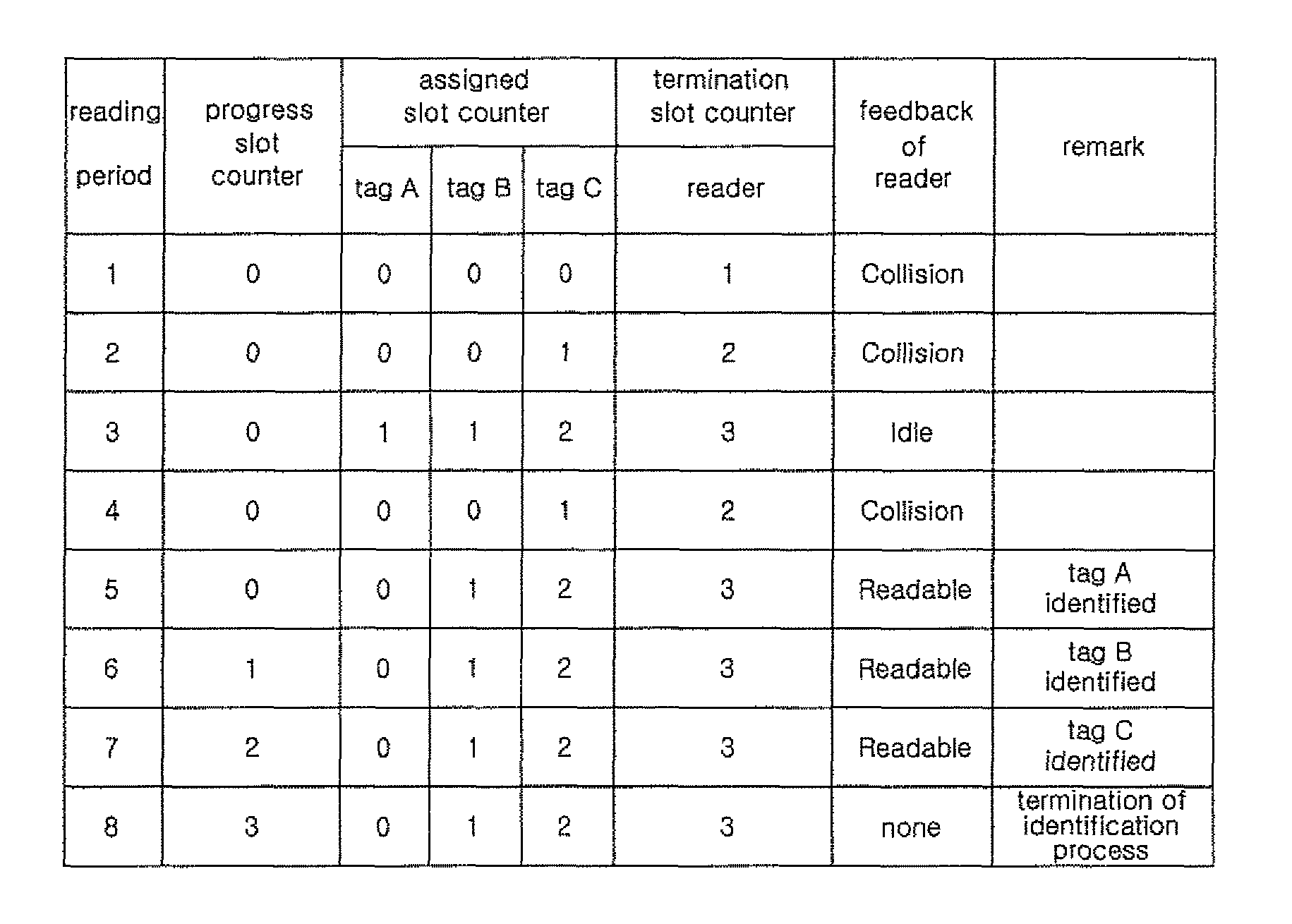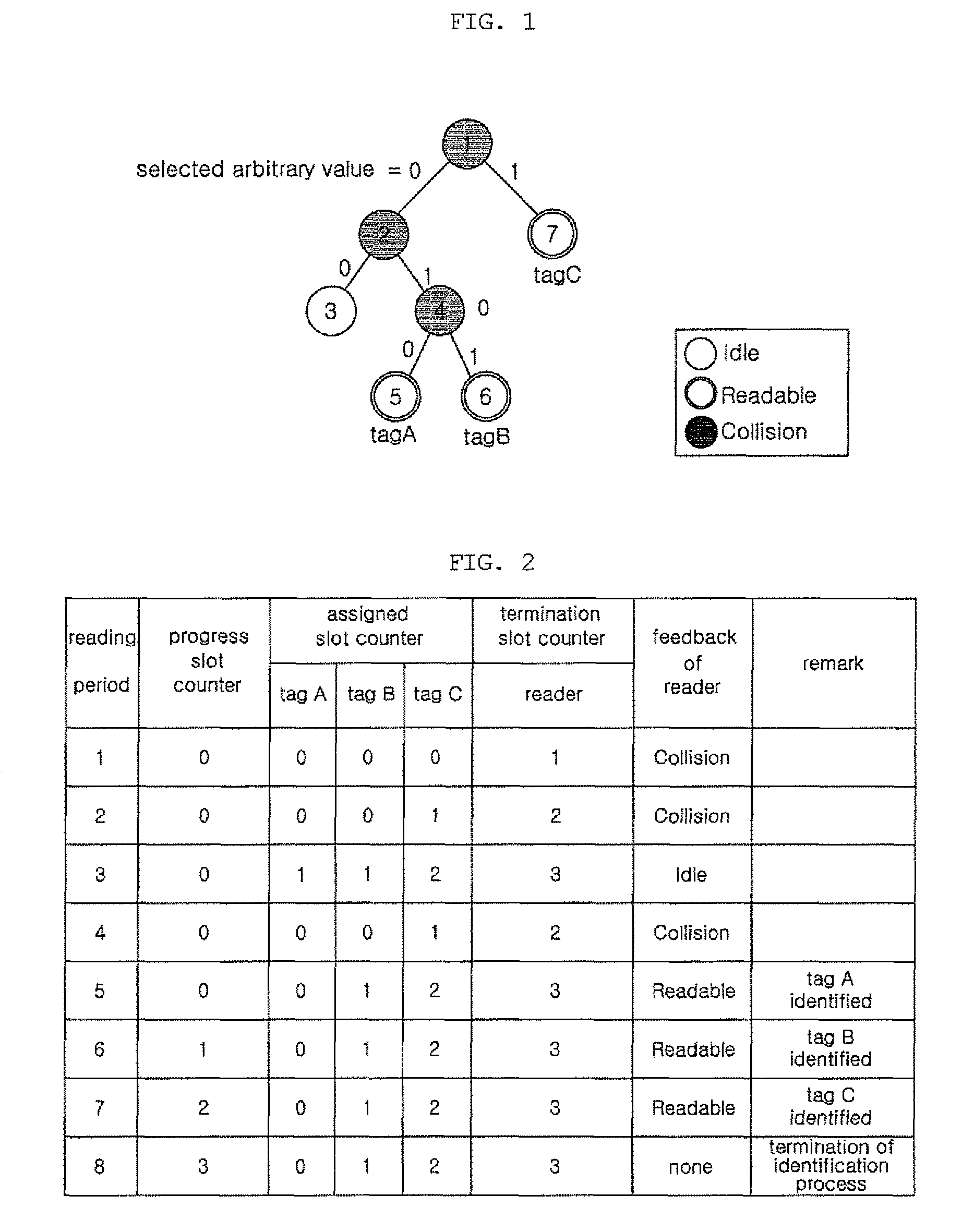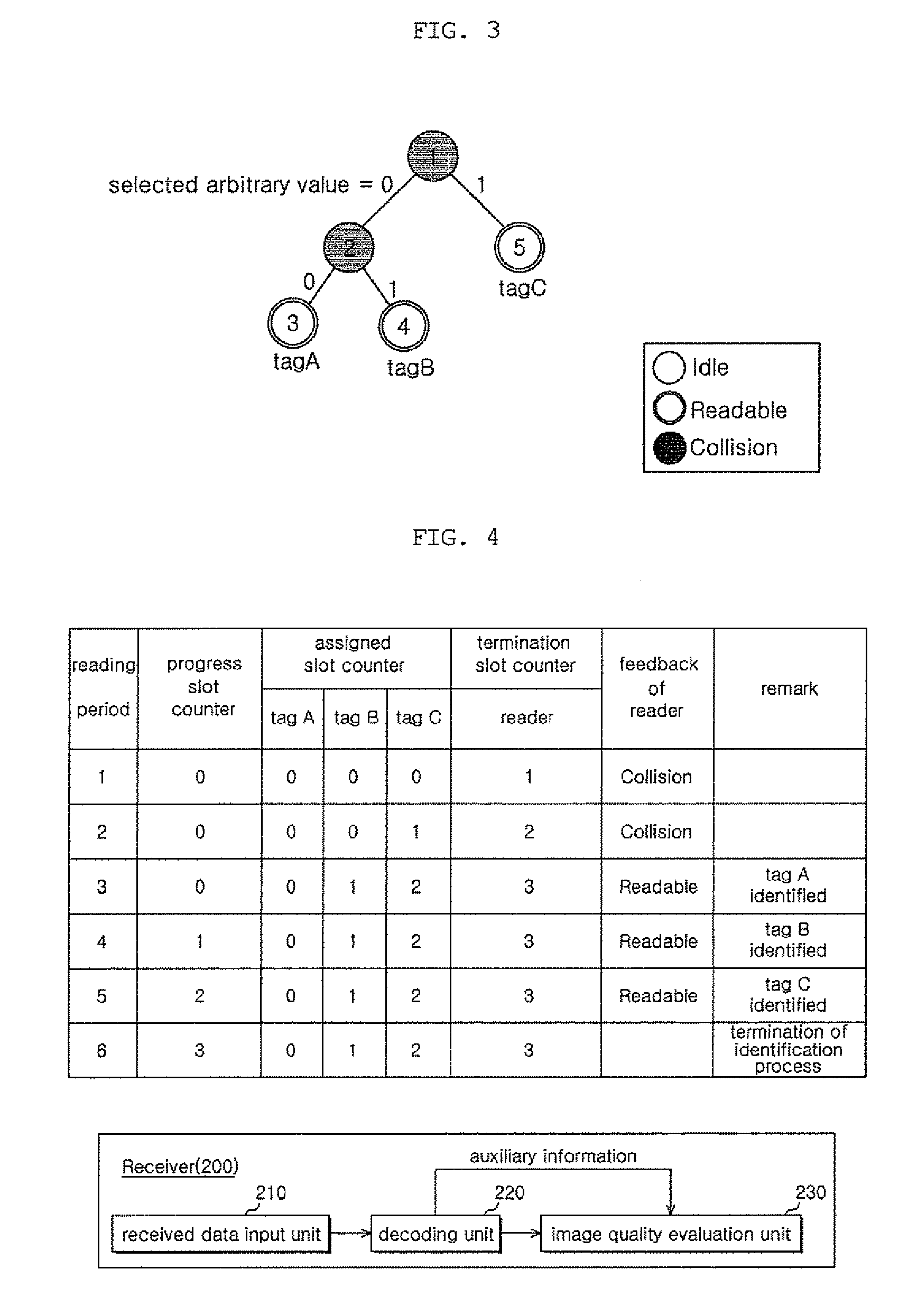Method for identifying tags using adaptive binary tree splitting technique in RFID system and RFID system therefore
a binary tree and tag technology, applied in the field of identifying tags using adaptive binary tree splitting technique in rfid system and rfid system therefore, can solve the problems of obstructing the rapid identification of tags or preventing readers, unable to completely prevent reducing the occurrence of collisions, and reducing the high search overhead of a binary tree techniqu
- Summary
- Abstract
- Description
- Claims
- Application Information
AI Technical Summary
Benefits of technology
Problems solved by technology
Method used
Image
Examples
Embodiment Construction
[0020]In order to accomplish the above object, the present invention provides an RFID system for enabling an RFID reader to identify all RFID tags through continuous communication between the RFID tags and the RFID reader, including, when a period, in which the RFID tags each send a signal, including an ID, to the RFID reader and the RFID reader sends feedback, is defined as a time slot, the RFID reader for sending one piece of information selected from among collision type information, indicating that signals from the RFID tags collide with each other; idle type information, indicating that there are no signals from the RFID tags; and readable type information, indicating that a signal has been received from a single RFID tag and the corresponding RFID tag has been identified, to all of the RFID tags within an identification range of the RFID reader, as type information of a specific time slot, depending on the number of signals sent from the RFID tags in the corresponding time slo...
PUM
 Login to View More
Login to View More Abstract
Description
Claims
Application Information
 Login to View More
Login to View More - R&D
- Intellectual Property
- Life Sciences
- Materials
- Tech Scout
- Unparalleled Data Quality
- Higher Quality Content
- 60% Fewer Hallucinations
Browse by: Latest US Patents, China's latest patents, Technical Efficacy Thesaurus, Application Domain, Technology Topic, Popular Technical Reports.
© 2025 PatSnap. All rights reserved.Legal|Privacy policy|Modern Slavery Act Transparency Statement|Sitemap|About US| Contact US: help@patsnap.com



